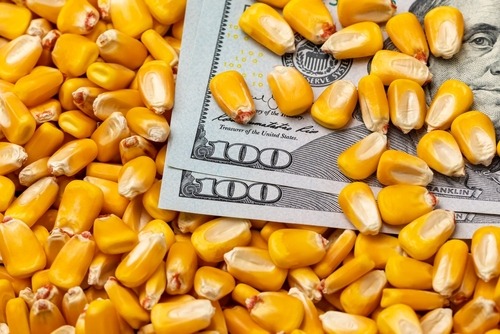Agriculture Markets: Tale of Two Wars
The war in Eastern Europe has influenced global prices for agriculture commodities like corn, soybeans and wheat—a market reality that likely won’t change until the war ends

The prices for agriculture commodities like soybeans, corn and wheat have been on quite the rollercoaster ride during the last five years.
This has been due to dramatic shifts in the geopolitical landscape—particularly the trade war between the U.S. and China, and the conventional war between Russia and Ukraine.
In 2018, the onset of President Donald Trump’s trade war with China pushed agriculture prices down to some of the lowest levels since the Great Recession. Amid that tumultuous period, soybeans hit a low of about $8.50/bushel.
These days, the war in Ukraine has had the opposite effect—constricting global supplies of agriculture commodities, and pushing prices toward multi-year highs. Today, soybeans are trading at about $15.50/bushel, which is roughly 80% higher than they did during the lows of the trade war.
Over that five-year period, corn and wheat prices have traded in nearly the same fashion as soybean prices. Today, both corn and wheat are currently trading at the upper end of their five-year ranges, with corn currently trading around $6.75/bushel and wheat currently trading around $8.10/bushel.
However, wheat prices are considered the most sensitive to developments in Ukraine because both countries involved in the conflict are ranked among the world’s top ten producers. Before the war started in 2021, Russia produced roughly 8.5% of the world’s total wheat, while Ukraine produced about 3%.
A considerable percent of Ukraine’s total wheat production has been knocked offline due to the ongoing war. During the 2022/2023 growing season, Ukraine has exported about 23 million tons of wheat, as compared to 33 million tons exported during the previous growing season.
That lost tonnage helps explain why wheat prices rallied from $8/bushel in January 2022, all the way to $12/bushel shortly after Russia invaded Ukraine. And crop prices are expected to remain firmly bid for the foreseeable future.
In February, Russia deployed tens of thousands of fresh recruits in eastern Ukraine to help repel recent advances by the Ukrainian military. Estimates now suggest that nearly 200,000 soldiers and civilians (and possibly as many as 300,000) have died since hostilities escalated early in 2022.
With both sides in the Russian-Ukrainian War still set on achieving their military goals, there’s little hope for a diplomatic solution—at least right now. That means the war in Eastern Europe will almost certainly continue to inflate global food and energy prices.
Looking beyond the war, investors and traders involved in agriculture sector markets should also keep an eye on the economy and the weather, because traditionally, these two factors have had the greatest influence over prices in the agriculture sector.
For example, if a sharp global recession develops at some point in 2023, agriculture prices could moderate due to reduced demand. On the other hand, a strengthening in the underlying economy would probably have the opposite effect—pushing agriculture prices even higher.
The weather will undoubtedly have an effect on prices in 2023, as well, but it’s still too early in the season to predict how the weather will impact the overall 2023 harvest.
For these reasons, investors and traders in the agriculture commodities space would be best served following ongoing developments related to the war in Ukraine, as well as the health of the underlying economy. For the time being, these two factors will likely have the most influence on the prices of soybeans, corn and wheat during Q1 and early Q2 2023, as highlighted below.
For more insights on key market narratives in 2023—including the agriculture sector—check out this installment of In This Economy? on the tastylive financial network.
For daily updates on everything moving the markets, monitor tastylive weekdays from 7 a.m. to 4 p.m. CDT.
Sage Anderson is a pseudonym. He’s an experienced trader of equity derivatives and has managed volatility-based portfolios as a former prop trading firm employee. He’s not an employee of Luckbox, tastylive or any affiliated companies. Readers can direct questions about this blog or other trading-related subjects, to support@luckboxmagazine.com.




















